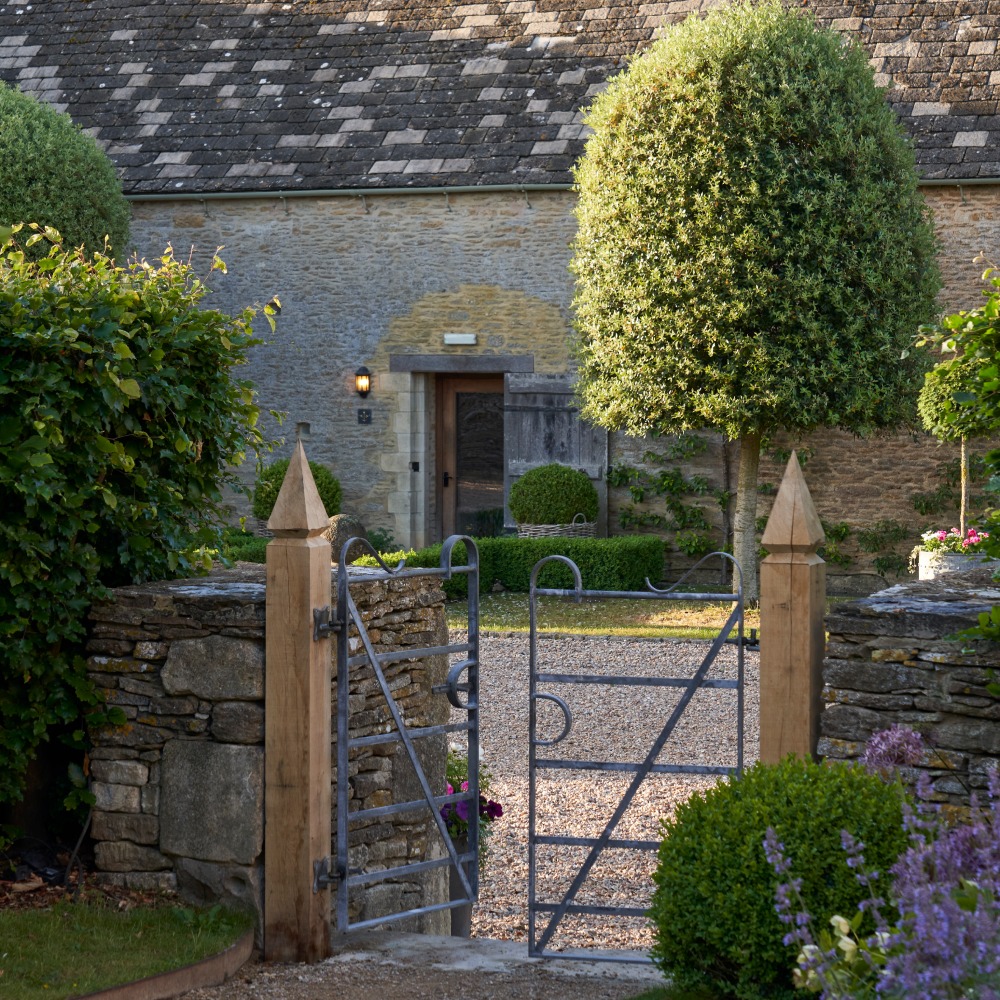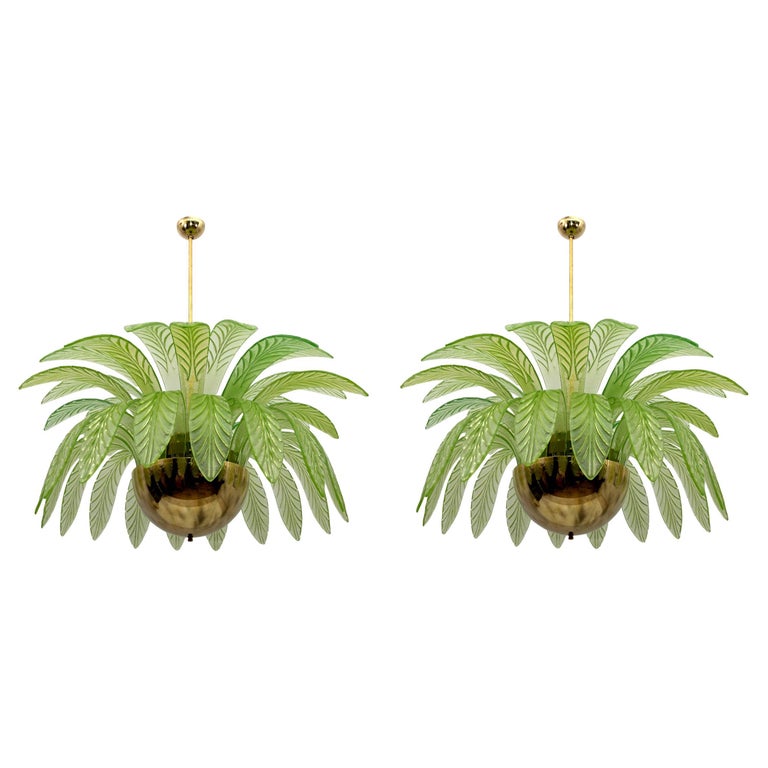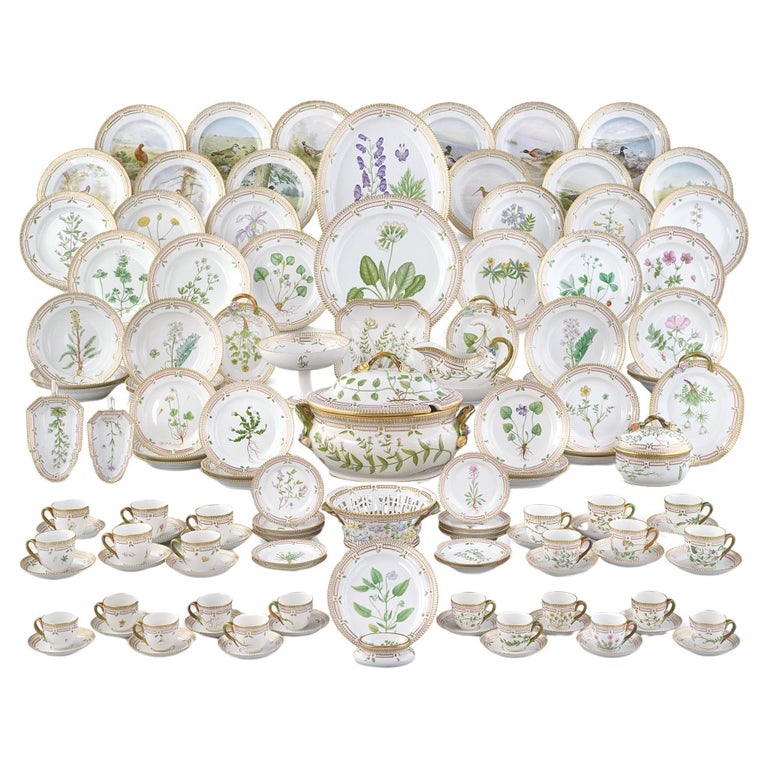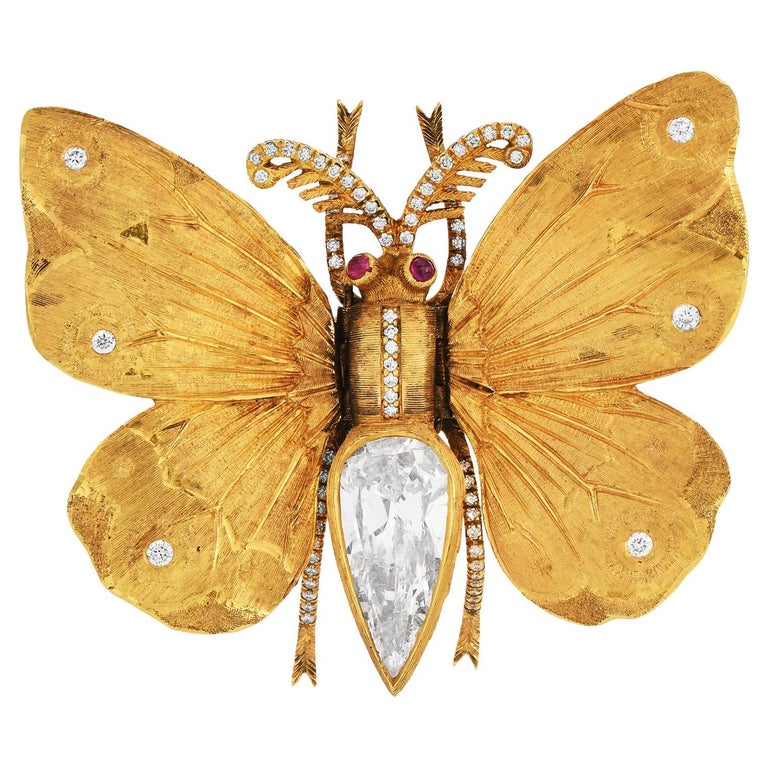June 29, 2025“I just wanted to have a lovely house, grow vegetables and bring the children up in the countryside,” says obstetrician-turned-hotelier Caryn Hibbert, speaking, somewhat wistfully, of her move from London to the picture-perfect village of Southrop, in England’s Cotswolds, in 2002.
Now, more than two decades on, she’s done all that — and a little more, too. Hibbert’s journey began when she, her husband, Jerry and their three then-young children moved into a landmarked eight-bedroom manor house, dating mostly from the 16th-century but with origins as far back as 1086. Soon after their installation there, they acquired a few farm buildings and cottages alongside the house, all of which, along with several further additions, now serve as the base of the mini-empire that is Thyme.
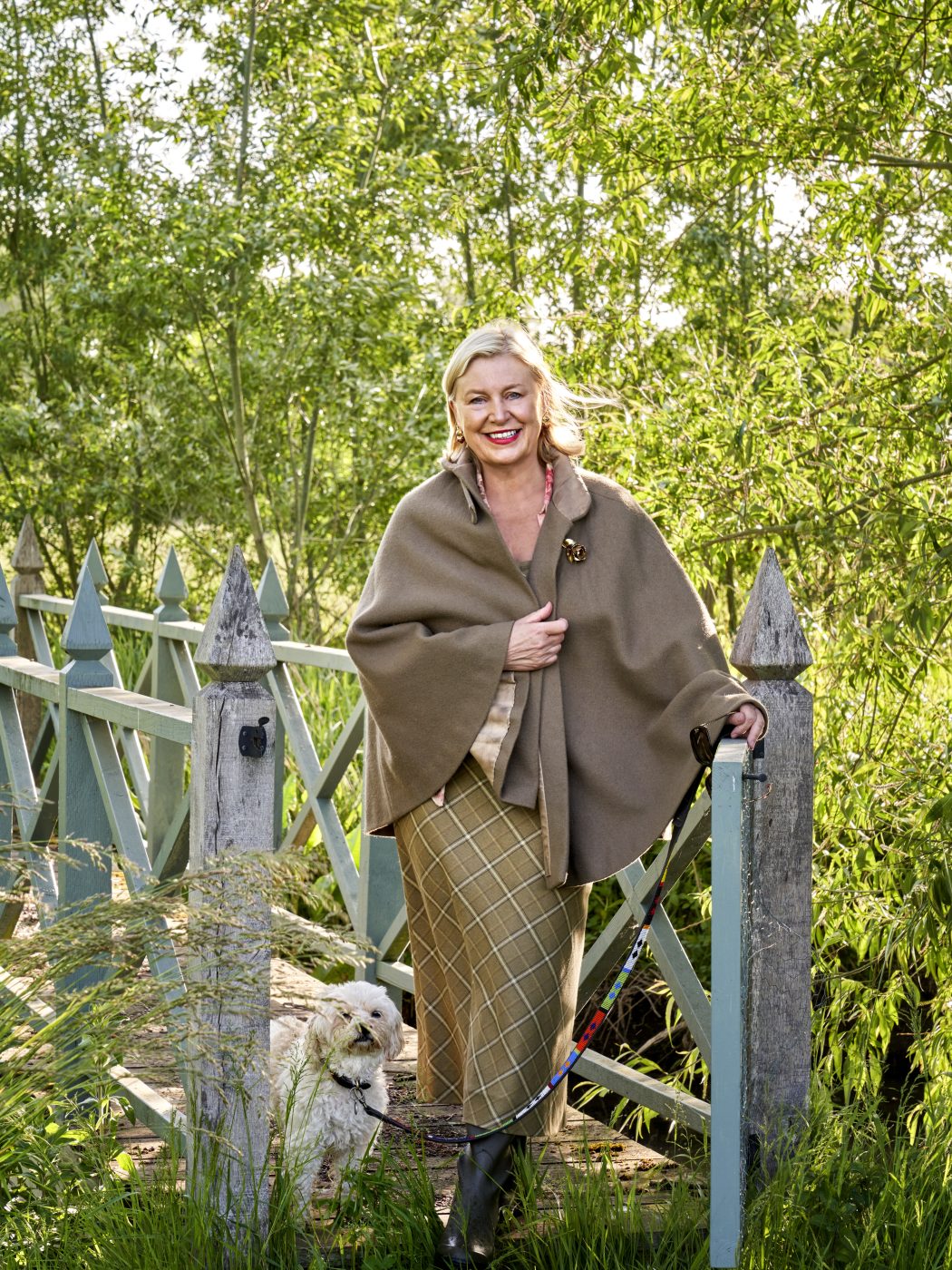
A Platonic ideal of a country hotel — and a cult favorite among design lovers —the property now holds 31 bedrooms scattered among a series of structures on a 150-acre estate, which also encompasses a cookery school, restaurant, spa, serene courtyard gardens, glorious wild meadows, kitchen gardens and a village pub.
In addition, Hibbert and her family have created a range of gorgeous wallpapers, fabrics and beauty products sold under the label Bertioli — Hibbert’s maiden name — and inspired by the estate’s water meadows, gardens, botanicals, produce and trees.
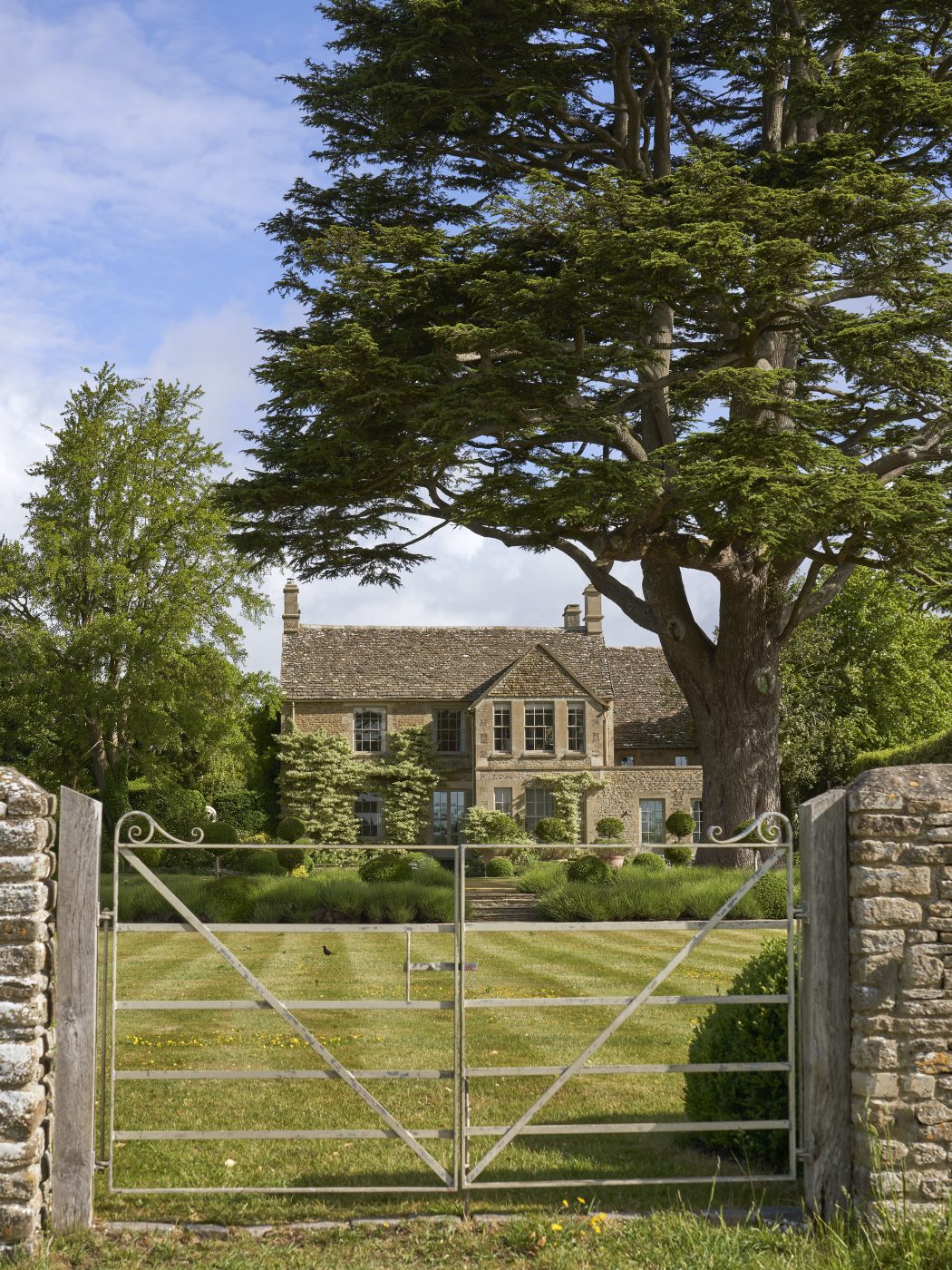
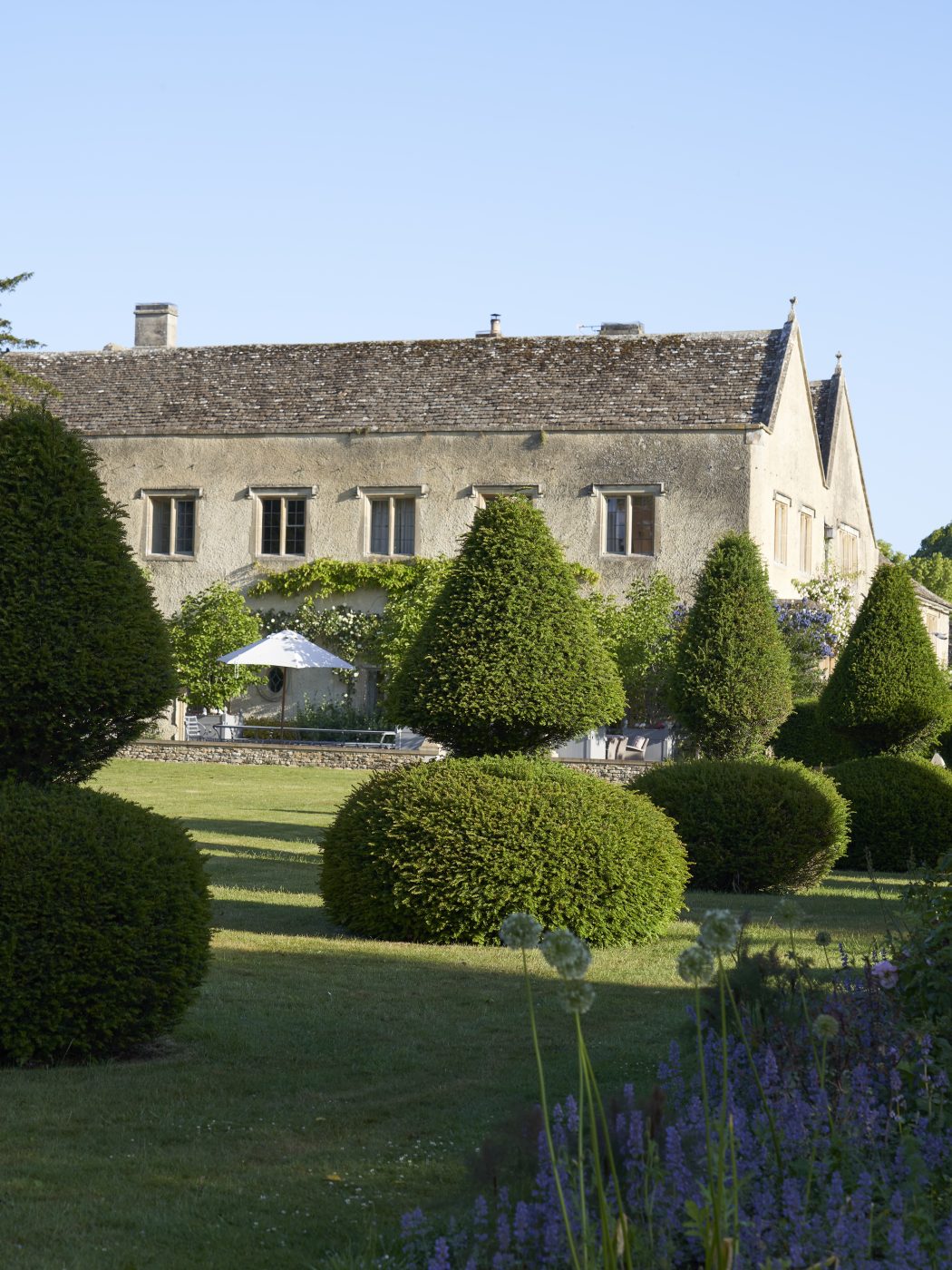
The evolution from country estate to hotel complex was a long process, marked by some stops and starts.
“I actually resisted being a hotelier,” says Hibbert. “I thought it might detract from the loveliness of the setting and devalue our experience of our home. But I changed my mind. I learned to appreciate hospitality and learned that when it’s good, there is nothing better.”
And for a taste of English country living, you can’t do much better than Thyme’s beautifully designed and appointed bedrooms, featuring a dazzling panoply of Hibbert’s botanical fabrics and a mix of antique and vintage pieces, like silver palm wall lights and chandeliers. These, Hibbert finds, “add huge glamour to a space,” especially when displayed in more-contemporary surroundings, as they are in Thyme’s white-resin-floored Garden Rooms.
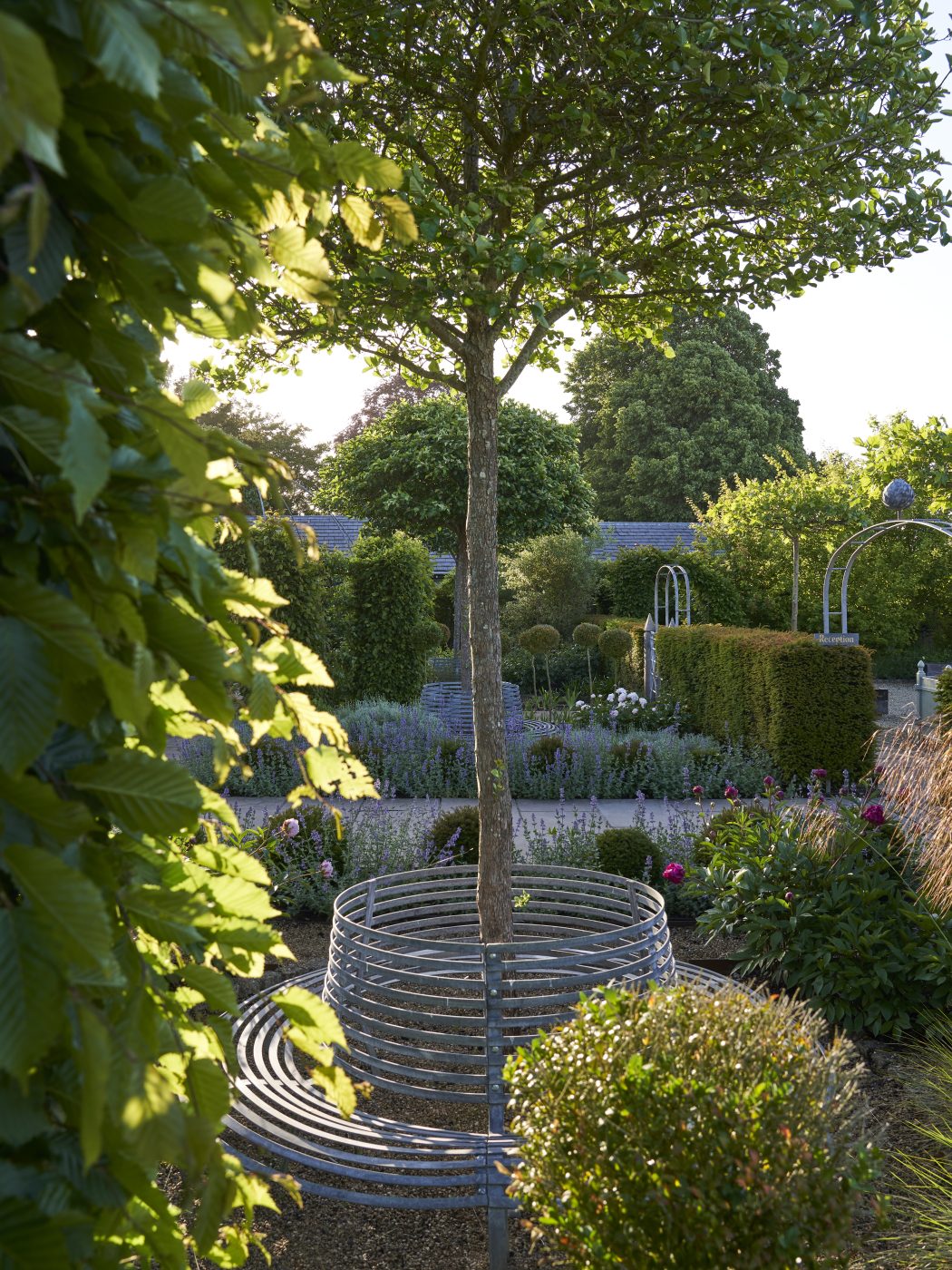
These newer rooms offer a cleaner, more modern look, with just as many charming details: a pair of antique painted bergere chairs here, a couple of fauteuils reupholstered in plain linens there. Plus, they offer freestanding soaking tubs and private courtyard terraces with firepits where you can sip a homemade vermouth nightcap under the stars.
In the common areas, antiques from local dealers, including Lorfords, are in dialogue with deeply comfortable, never-get-up-again sofas.
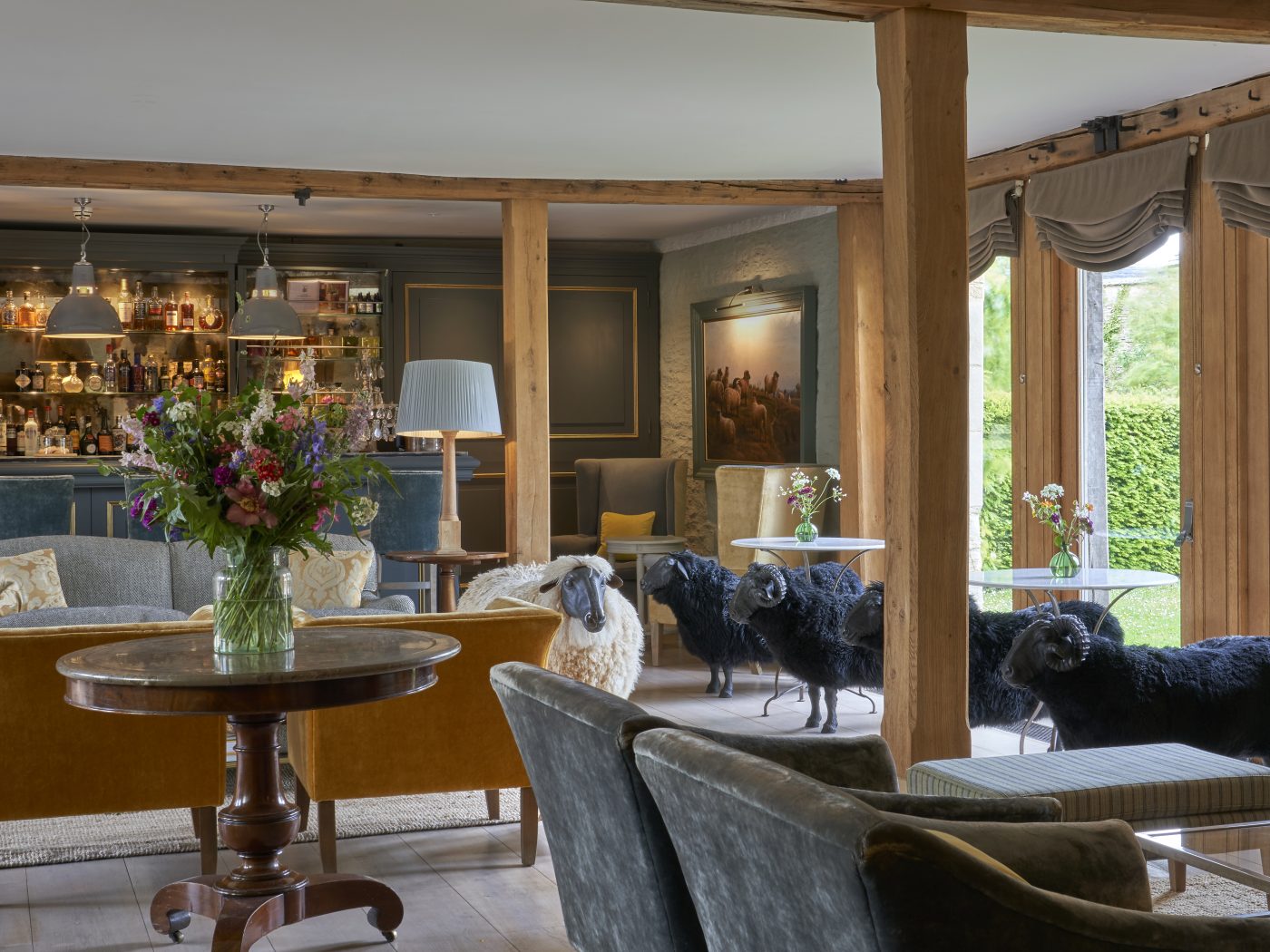
“I think modern decorating is that juxtaposition of old and new,” Hibbert says. “I am unapologetic about pattern and color, and I have no particular era in mind when sourcing furniture. It’s all just things I like. And I think mixing it up makes rooms really work.”
Much of that pattern and color comes from the lush botanical wallpapers and fabrics that Hibbert designed. “Since we were decorating the rooms, I thought we might as well create our own fabrics,” she says. Though claiming that she “hadn’t picked up a paintbrush since school,” she displays a natural flair for interior design and painting.
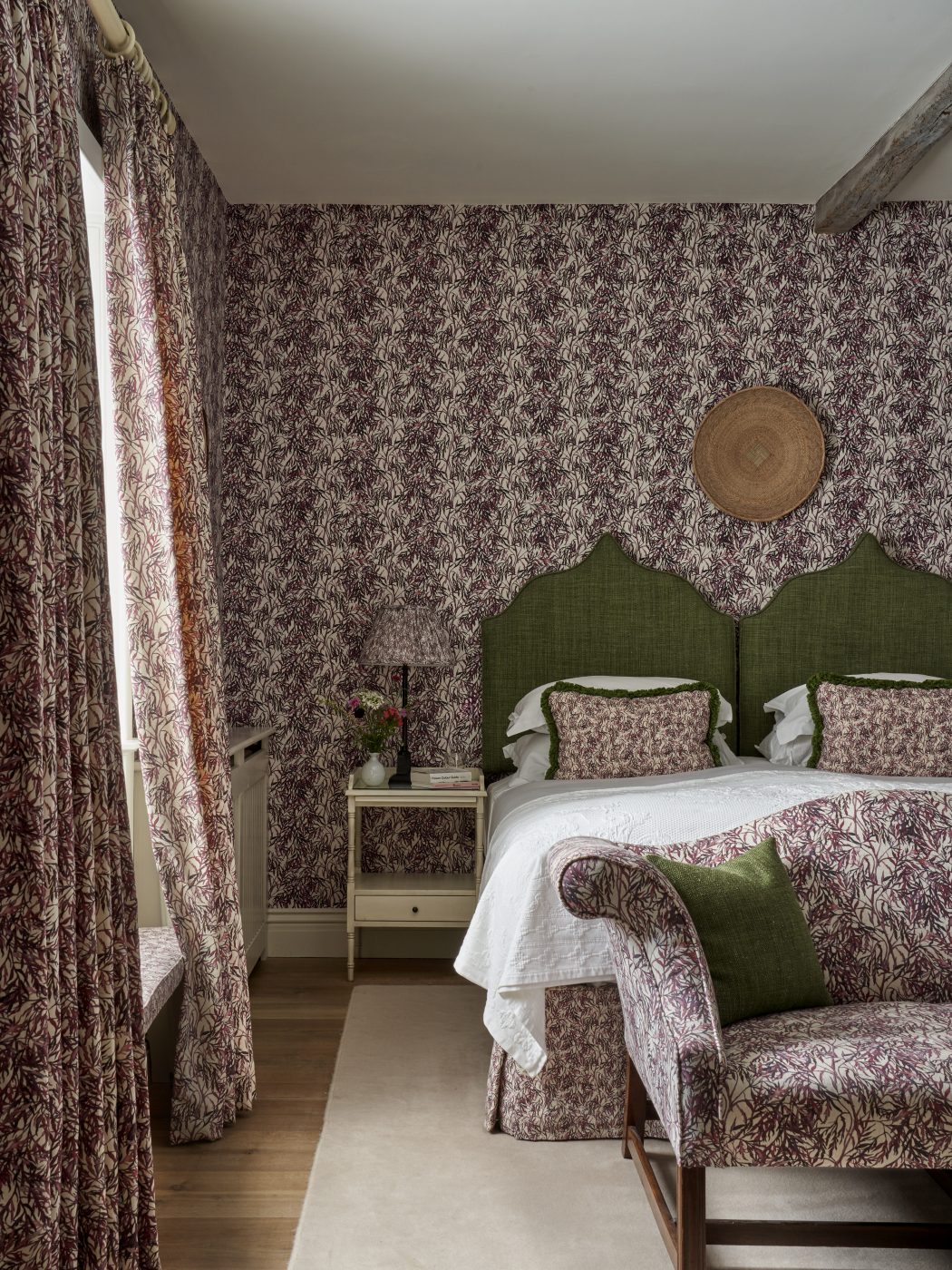
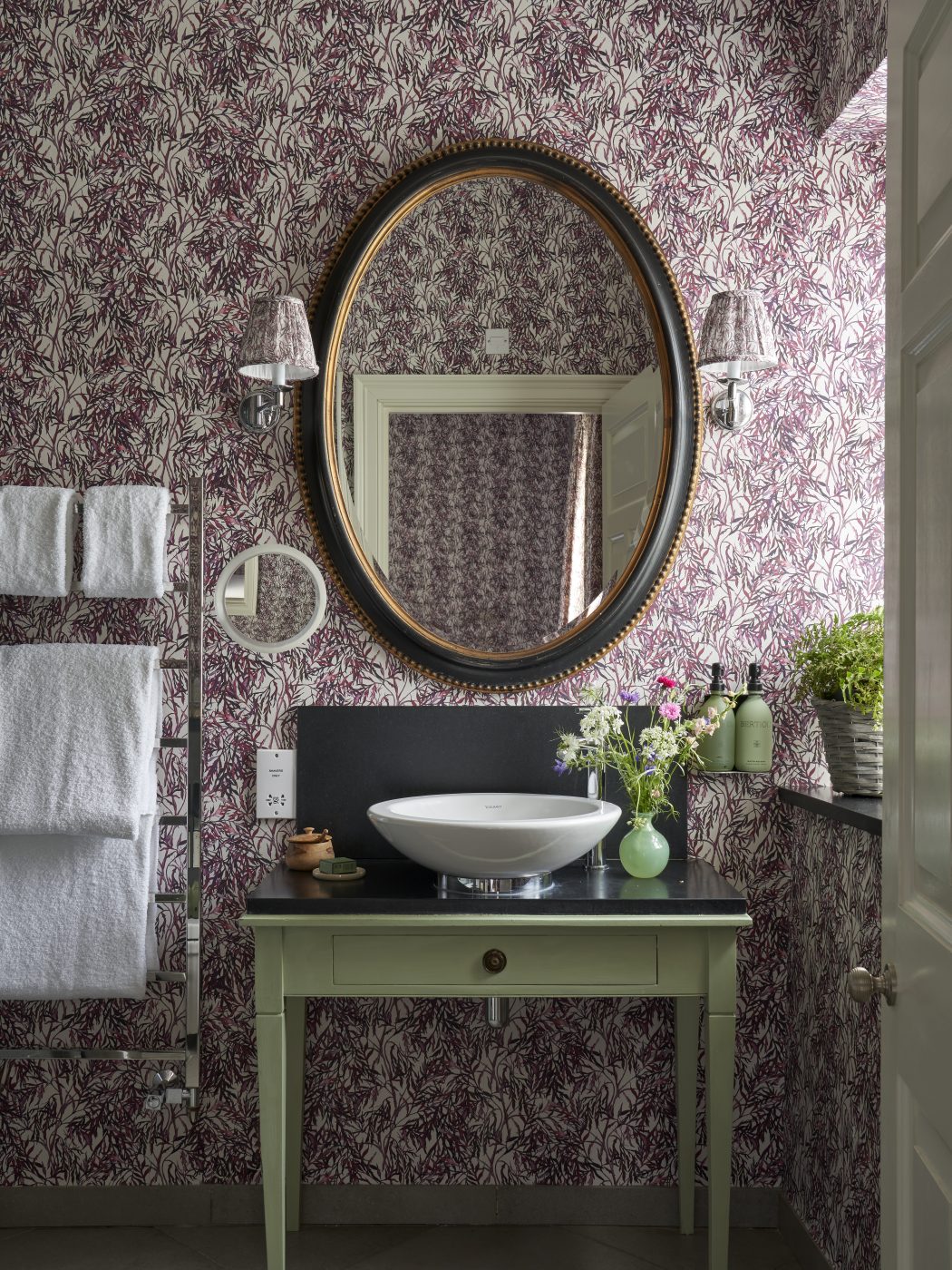
Her obvious talent in these areas, as well as for hospitality, and her habit of creative thinking come from both her parents. Her father, Michael Bertioli, was a physicist and engineer who initiated the use of silicone in transducers employed for measuring pressure in the medical, aerospace and other industries.
Bertioli, who died in 2021, was her “introduction to being an entrepreneur and to science,” says Hibbert, who grew up in Staffordshire about three hours north of London. Her mother, meanwhile, “was the one who gave us a love of plants, gardening, homemaking, cooking and the countryside.”
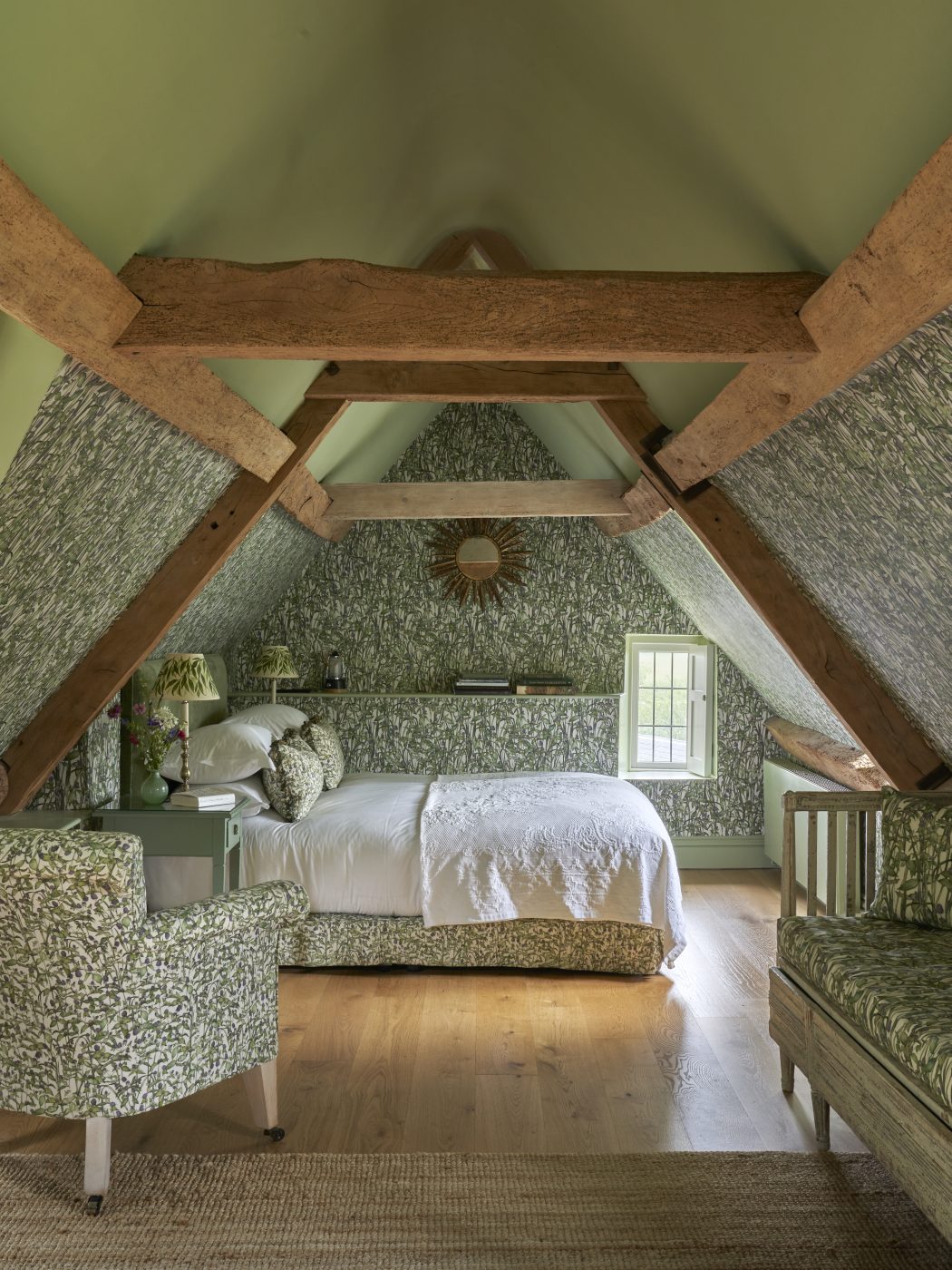
After studying medicine at the University of Nottingham, Hibbert trained in London in what was then the mostly male-led field of obstetrics, working in major hospitals. “I loved the human side of medicine and did some quite pioneering things, working with the first surgeon to do laparoscopic surgery in this field,” she says. “But I equally loved being a mother and homemaking and wanted to move out of London.”
In Hibbert’s telling, their purchase of the golden-stone manor house next to a tiny 11th-century Norman church was made almost on impulse. “We drove through the village, liked it and never looked at anything else!” she says.
Not long after, the two huge derelict barns adjacent to the property were offered for sale.
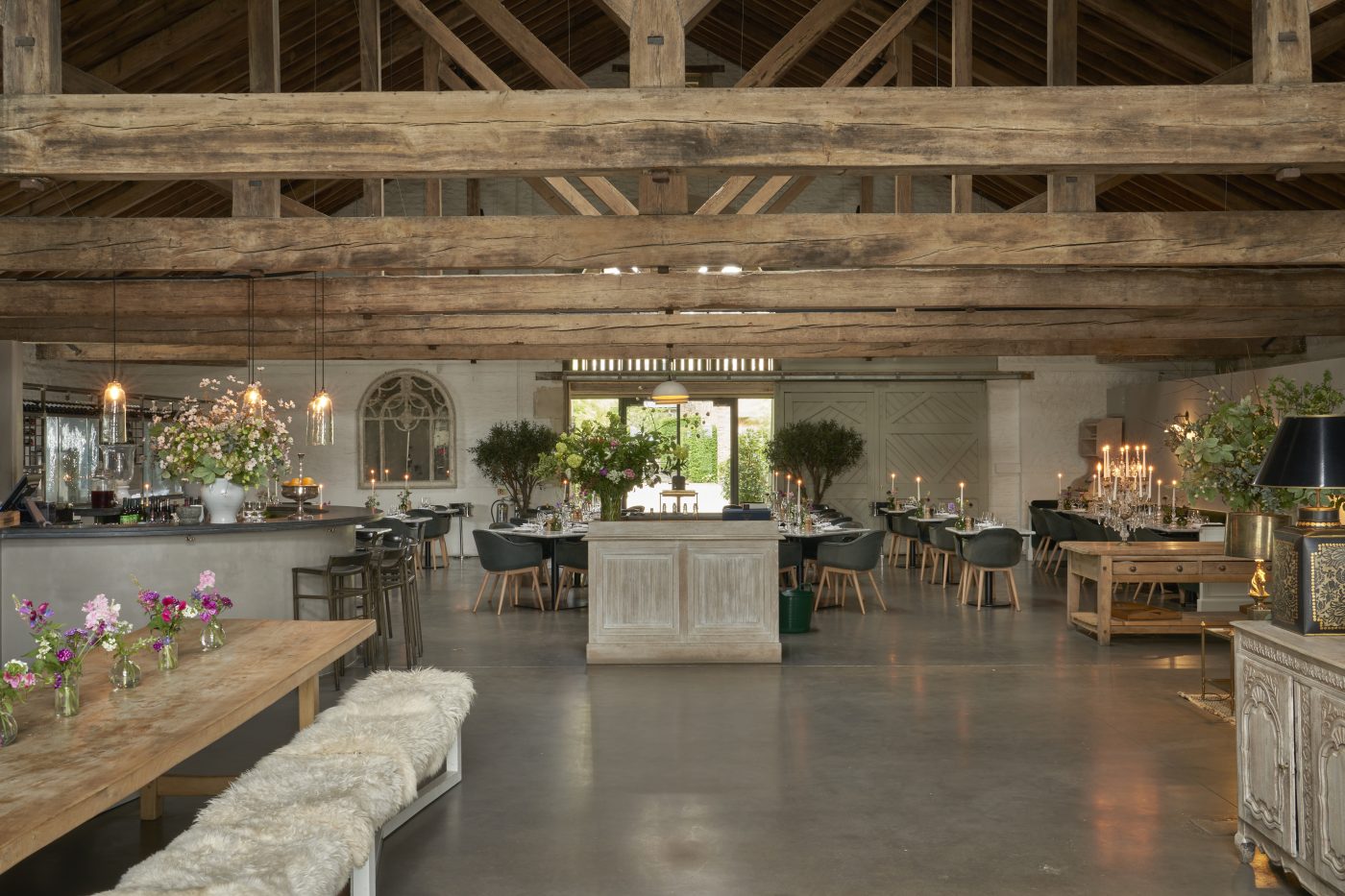
Michael Bertioli, who had just sold his company, “wanted a project,” Hibbert says. “They had an offer in from developers, so we bought them quickly. I remember thinking, ‘What do I want these for?’ But my father loved old working buildings and the idea of restoring them and giving them new purpose. These were the center of the community at one time and provided livelihoods. We wanted to honor the fact that they were farm buildings, albeit huge, grand spaces, and to keep the simplicity and beauty of the original architecture.”
Today, those barns, constructed from the same Cotswold stone as the Hibberts’ neighboring house, sit at the heart of Thyme. The 17th-century Tithe Barn hosts the adjacent cookery school’s tastings, pop-up events, cocktail-making classes, art exhibitions and talks. Sparsely furnished, it contains two monumentally long 18th-century console tables originally made for a Spanish monastery.
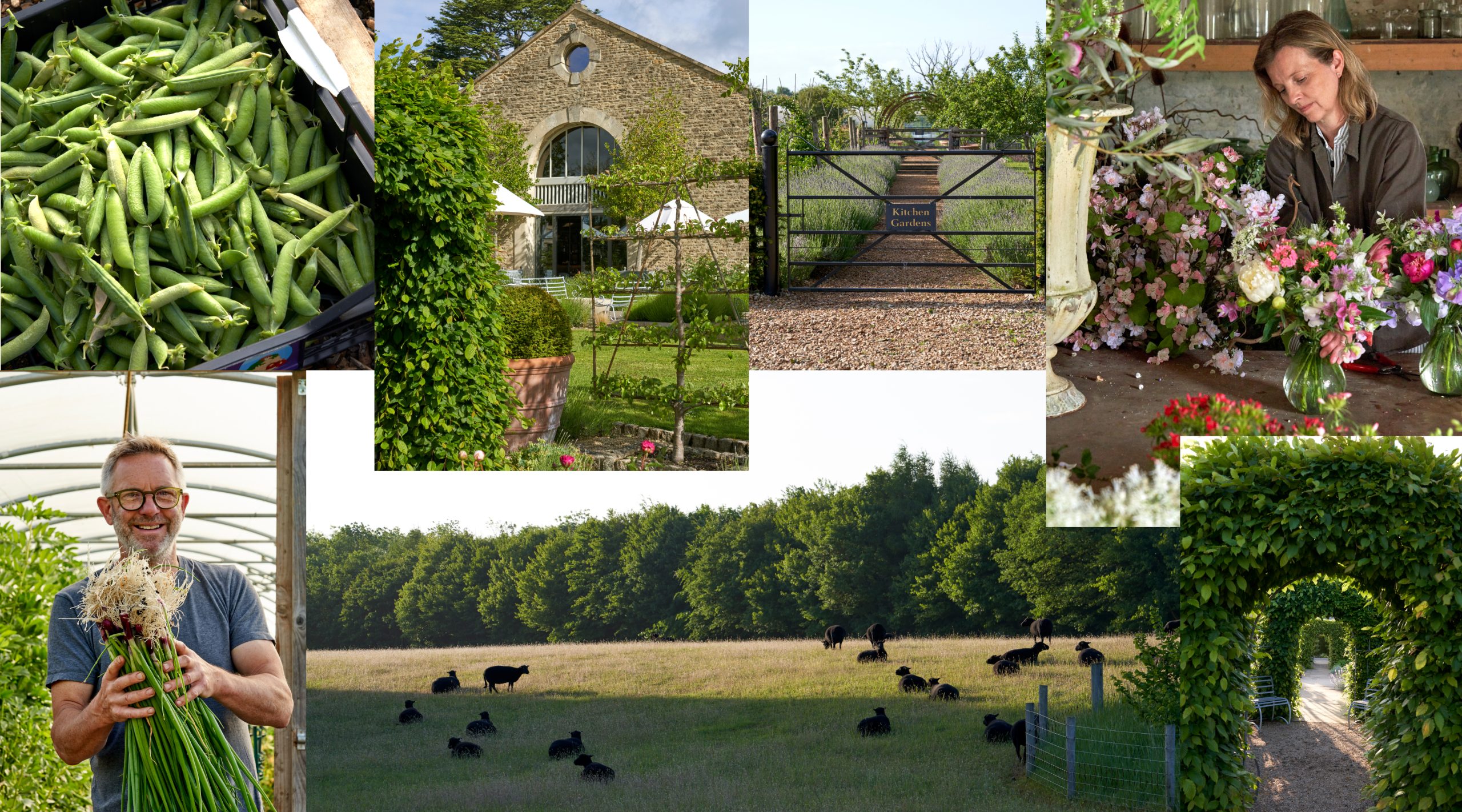
The magnificent Ox Barn — crisscrossed by single-span, 53-foot Douglas-fir beams — serves as the hotel’s central dining room. It boasts an ornately carved bleached-wood sideboard that Hibbert points to as a knockout example of “a historic antique piece looking wonderful on a simple polished-concrete floor.” She also loves the pair of mid-century Maison Charles brass horse-head table lamps that she placed nearby as “a little nod to the horses we used to keep in the barn before deciding to turn it into a restaurant.”
The Hibbert’s professional-chef son, Charlie, oversees the restaurant’s farm-to-plate menu, which largely draws from produce picked daily on the property. He also masterminds the more casual menu at the Swan, a 17th-century village pub just across the road that the family bought in 2005.
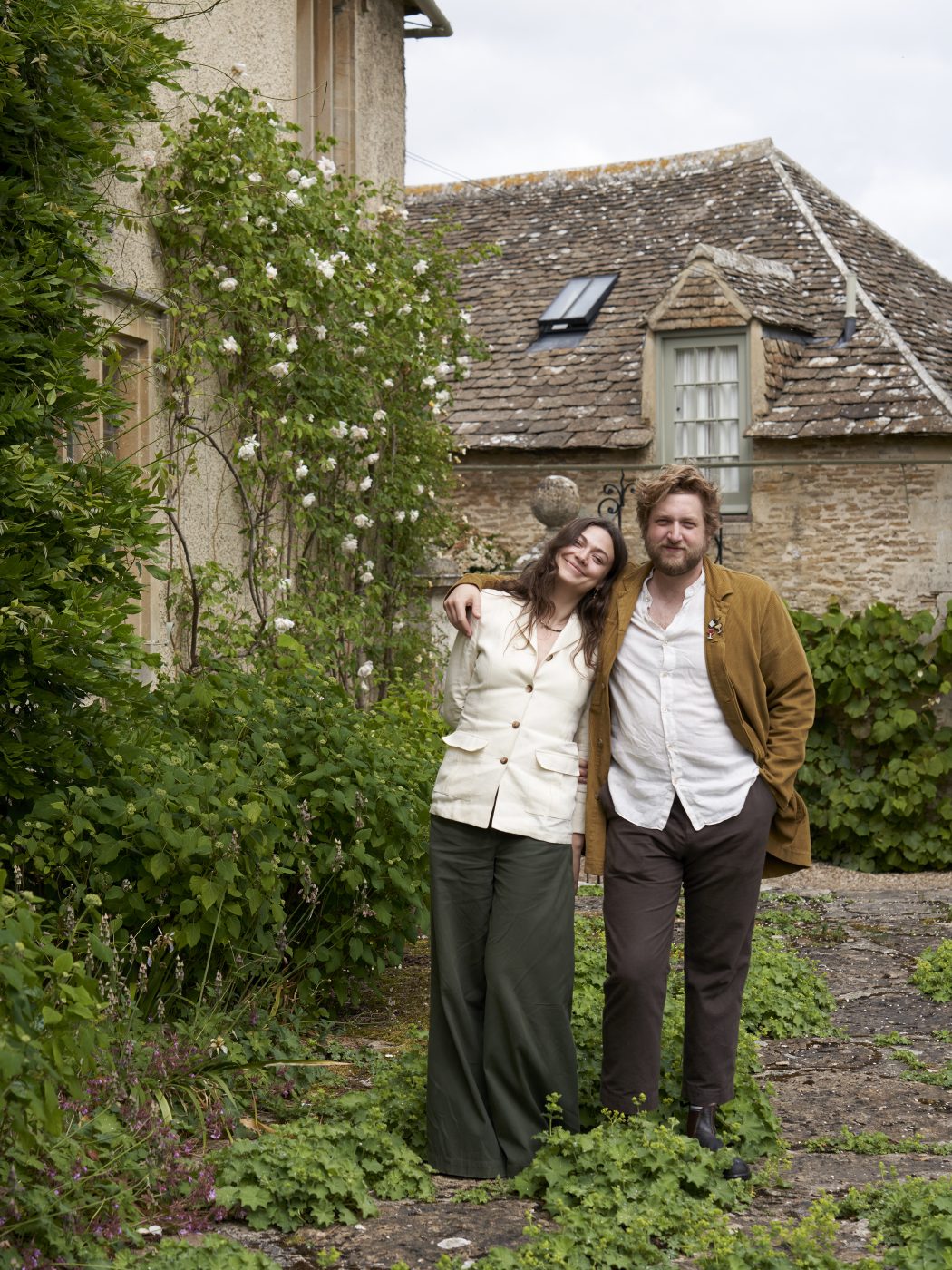
“We used very neutral palettes, greens and grays, to offset the natural wood,” Hibbert says of the restaurant’s decor. “And we didn’t try to prettify anything.”
While still renovating the barns, Hibbert started a cookery school as her first venture into hospitality. “I had always loved entertaining, cooking and growing our own produce,” she explains, “and it was at the moment the Slow Food movement was becoming increasingly popular.” Opening the school, she continues, “was a way of connecting all the dots of the things I loved.”
After restoring and decorating a few nearby cottages, she rented them to cooking students. Then, another nearby large building, a farmhouse, came up for sale, and she realized she “wanted to do something more.”
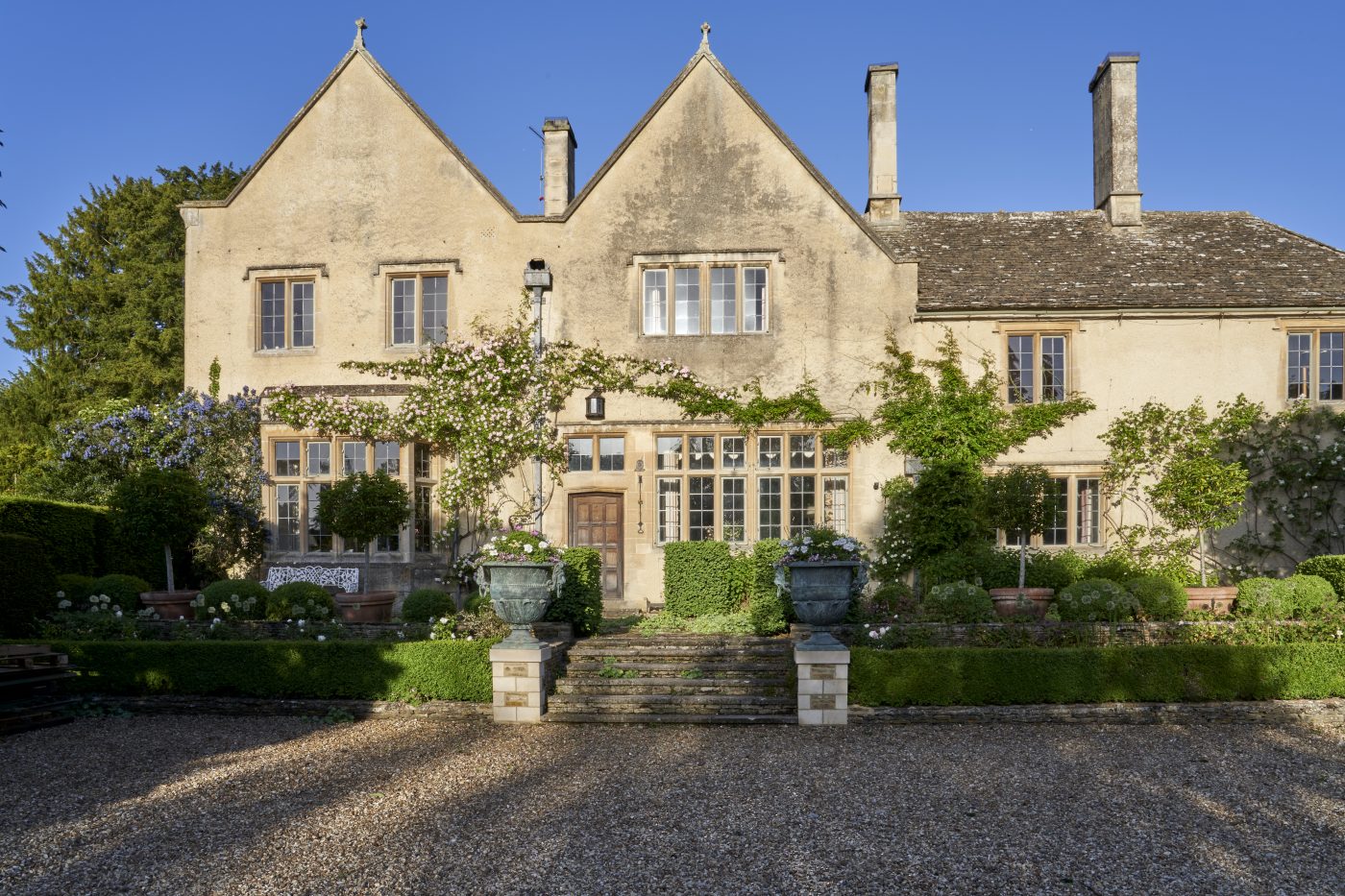
She worked with Roger Hall, whom she calls “a brilliant interiors architect,” to create the farmhouse’s eight bedrooms with en-suite bathrooms using a Cotswold vernacular for the exteriors and sourcing antiques “from all sorts of periods” from local outposts and France. She deployed “a lot of pattern in the design,” inspired by flowers in the hotel’s cutting garden: phlox, elderflower and Sidalcea, all painted by Hibbert.
The Farmhouse opened in 2014, and when still another property became available in 2016, the Hibberts decided they had to buy that as well.
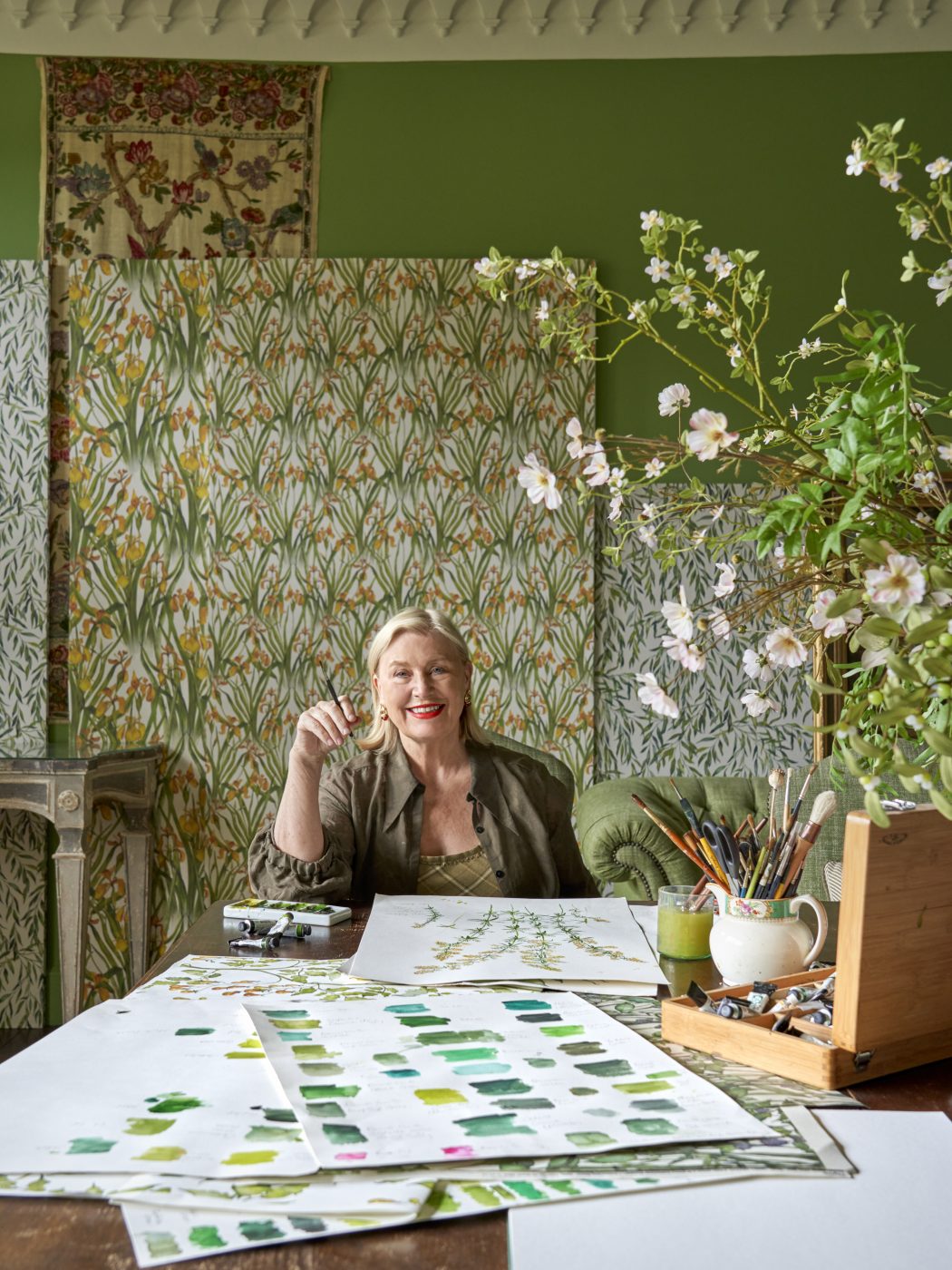
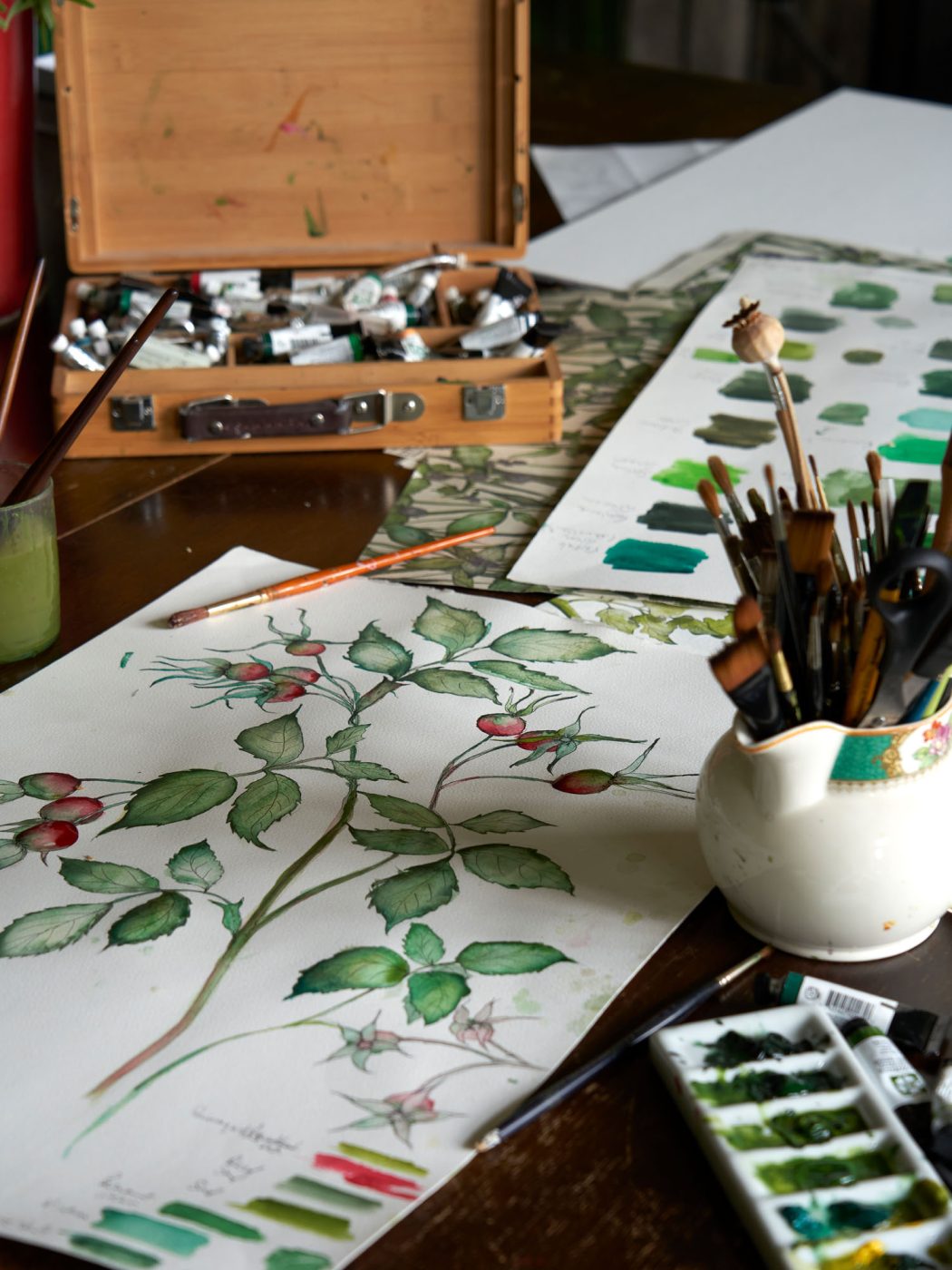
“We were renovating the Ox Barn as a restaurant, and this gave us the opportunity to create the spa and the well-being side of things and brought our bedroom numbers to thirty-one,” she says.
The Lodge, as it’s known, is now home to some of Hibbert’s favorite pieces: a handsome console table with its original Roquefort green marble top and a glamorous Maison Jansen coffee table whose neoclassical design includes a lower shelf of gilded leather. “It’s small but has great presence,” she notes.
Today, Thyme’s maze of buildings is cleverly connected by gravel paths that wend through pretty courtyard gardens designed by Bunny Guinness and dotted with rose bushes, lavender, espaliered trees, fountains and thoughtfully placed benches and tables. A towering Cedar of Lebanon tree in the center of the property helps visitors get their bearings should they find themselves pleasantly lost amid the hedges, walled gardens, stone structures and pathways.
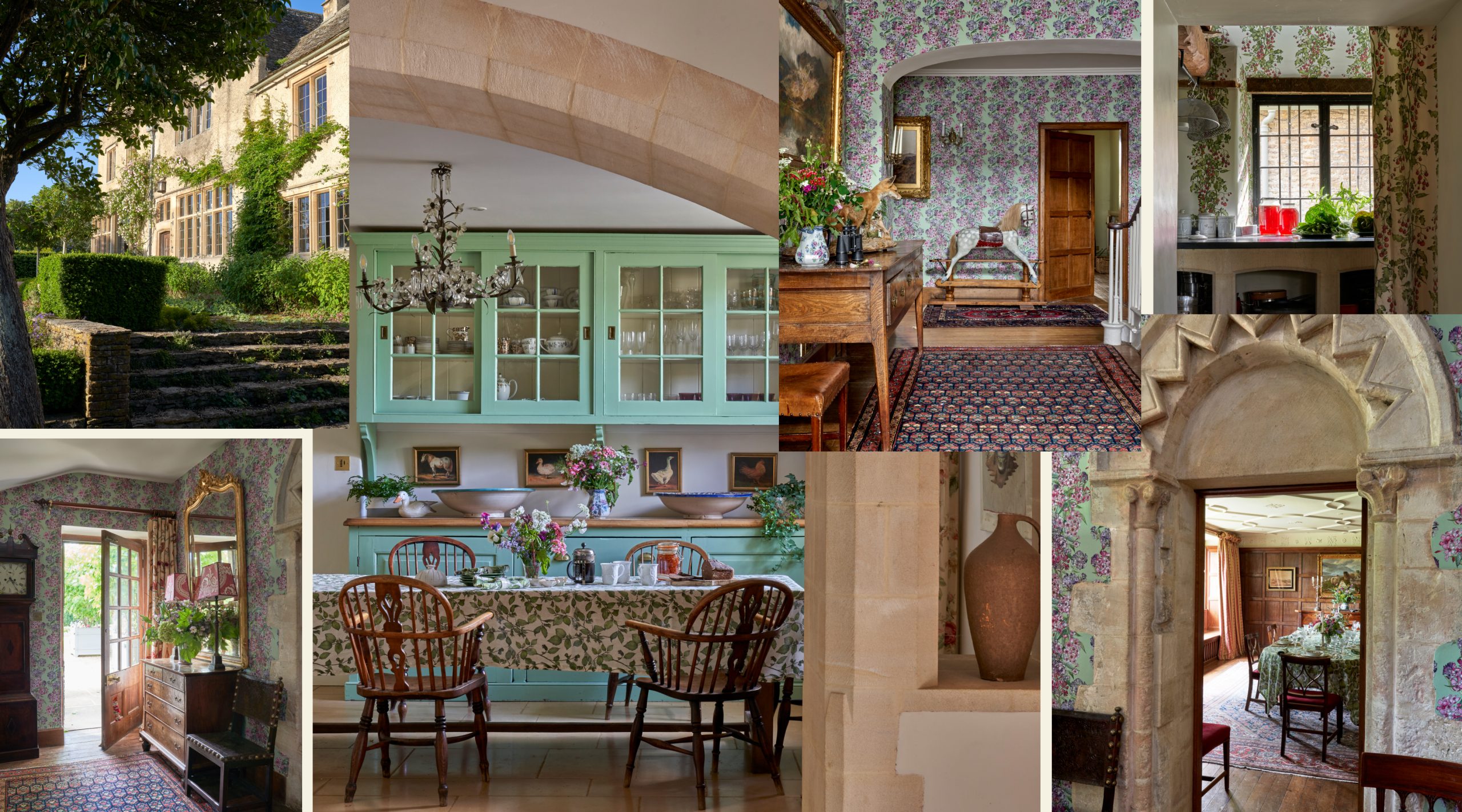
In 2018, with the Lodge, the spa, and the Ox Barn restaurant all recently opened, the Hibberts recruited another family member — daughter Milly — to help with the growing retail side of the business.
“I try very hard to keep Mum on track,” Milly, now the hotel’s general manager, says with a laugh. “She works on the creative side, starting with her inspiration for designs — it could be a habitat, a botanical — then we look at different ways that can be brought to life, through pattern and scent but also through experiences, like treatments in the spa and guided walks for the guests. We are always trying to connect people to a story and an environment.”
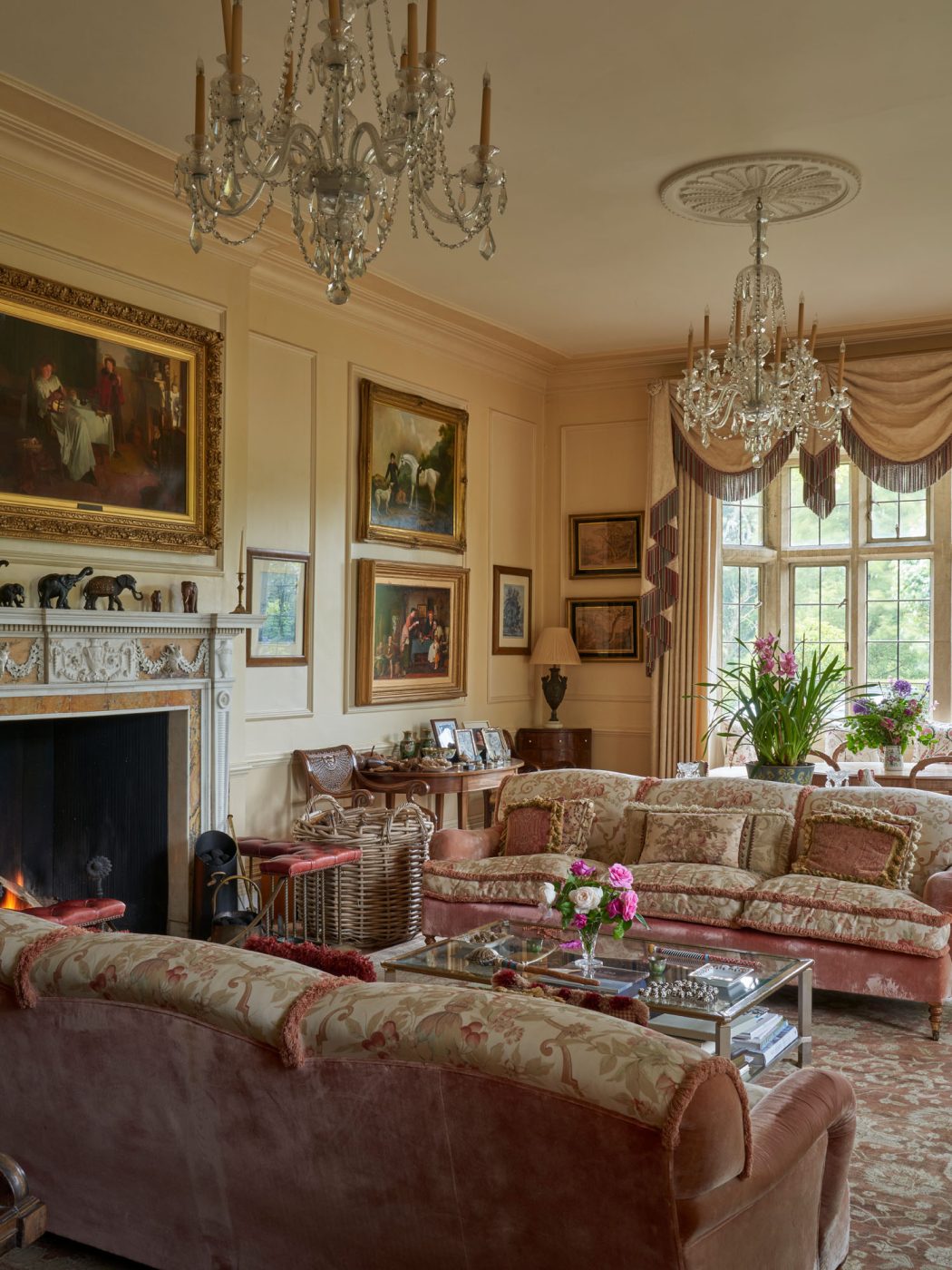
Hibbert is passionate about the land and sustainability, and about nature as a healing force. “From working as an obstetrician, I have always been interested in, and aware of, the power of breath,” she says while guiding a visitor through the serene sage-painted spa and adjacent Botanical Bothy, in which guests can book a session of guided breath work and pressure-point techniques.
Continuing her tour through the lush kitchen gardens and beautiful meadows that surround the hotel, Hibbert pauses to look over the flowering grasses, pointing out meadow buttercups, a spotted orchid and kestrels and kites flying overhead.
“We want people to come here and slow down, breathe, feel connected to nature,” she says. “Isn’t it beautiful?”
